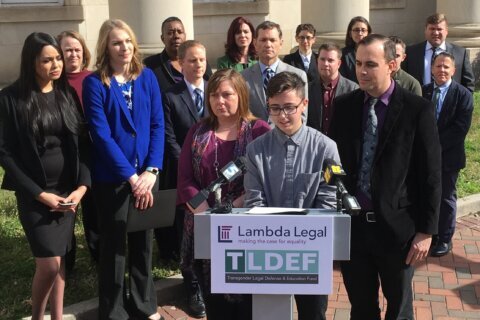NEW YORK (AP) — New U.S. hepatitis C infections dropped slightly in 2022, a surprising improvement after more than a decade of steady increases, federal health officials said Wednesday.
Experts are not sure whether the 6% decline is a statistical blip or the start of a downward trend. Seeing 2023 and 2024 data, when it’s available, will help public health officials understand what’s going on, said Daniel Raymond, director of policy at the National Viral Hepatitis Roundtable, an advocacy organization.
“We’ve had a decade of bad news … I am cautiously encouraged,” he said. “You always want to hope like something like this is real, and a potential sign that the tide has turned.”
Infection rates did not occur across the board. They declined for white Americans, but continued to rise in Black, Latino and Native American communities, according to Dr. Neil Gupta, who oversees the branch of the Centers for Disease Control and Prevention that tracks viral hepatitis.
The hepatitis C virus is spread through contact with blood from an infected person. The virus does most of its damage by infecting the liver, and, if left untreated, can lead to cirrhosis or liver cancer. Infections are driven mainly by people injecting illicit drugs.
Data released by the CDC for 2022 shows 4,848 new infections, down from 5,023 reported the year before. The CDC estimates about 67,000 new hepatitis C infections actually occurred in 2022, because many people who become infected don’t realize it, meaning most new infections are not diagnosed and reported. But that too is down, from 70,000 estimated for 2021.
The new infection rate — used to better compare data from one year to another — dropped 6%. Though the decline is encouraging, Gupta said, the 2022 statistics are still twice as high was what the nation saw in 2015.
Cases had consistently gone up since 2013 during the longstanding opioid epidemic due to drug users shooting heroin and fentanyl. Experts say a couple of factors could have contributed to a decline in 2022, including successful prevention efforts and needle exchanges.
The North America Syringe Exchange Network keeps a directory of U.S. programs, and listings have grown from about 300 to nearly 500 in the last several years, said Paul LaKosky, NASEN’s executive director. Many programs also have boosted hepatitis C testing and found ways to get infected people to treatment, he noted.
But LaKosky and others think something else may be at play, too: Drug users are shifting from injecting to smoking. A recent CDC report found that between early 2020 and late 2022, the percentage of overdose deaths with evidence of smoking rose 74% while the percentage of deaths with evidence of injection fell 29%.
Fewer people injecting drugs like fentanyl means fewer opportunities for the spread of hepatitis C, experts noted.
“There has been a tremendous shift in the way people are consuming their drugs. There’s been a decrease in demand for syringes. We’ve seen this nationwide,” said LaKosky, who added there is more demand for supplies to snort or smoke drugs.
More than 2 million Americans are infected with hepatitis C, some of them having lived with infections for many years, the CDC estimates. About 12,700 Americans died in 2022 of hepatitis C-related causes, the CDC said.
___
The Associated Press Health and Science Department receives support from the Howard Hughes Medical Institute’s Science and Educational Media Group. The AP is solely responsible for all content.
Copyright © 2024 The Associated Press. All rights reserved. This material may not be published, broadcast, written or redistributed.






